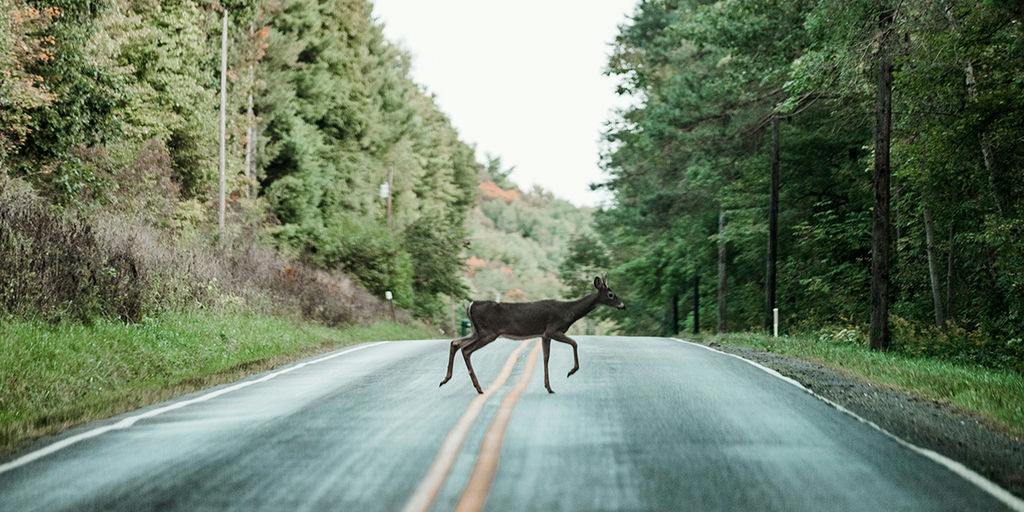The Road to Reconnection: Wildlife Crossings Address Habitat Fragmentation

(Image Source: Donnie Rosie/Unsplash)
Roads and railways empower human mobility, but they also divide natural landscapes making it difficult for wild animals to move freely in search of food, water, shelter, and mates. Migratory species travel long distances seasonally for survival, and even species that do not migrate often need wide ranges to thrive. Shifts in habitats and food supply caused by climate change make it even more important for animals to access different environments. Wildlife crossings provide safe paths for animals to navigate a landscape increasingly altered by humans.
Green bridges are built over roads and highways and designed to look like the natural landscape. They are often covered with soil and native plants to encourage animals to use them. The Netherlands has constructed over 600 wildlife crossings*. For example, the Natuurbrug Zanderij Crailoo is a green bridge that people can walk and bike across which also helps animals like deer and badgers move safely between sections of a nature reserve. Connecting otherwise separated populations of animals allows those animals to maintain a healthy population.
Australia has another kind of wildlife bridge that caters to the annual migration of millions of red crabs in Christmas Island National Park. These crabs travel from the forest to the beach annually to dig burrows for mating. Crab bridges assist them in crossing roads safely. Barriers are strategically placed along the crabs' natural paths to direct them towards the bridges, making their migration safer from vehicles.
Wildlife crossings can also be underground. The Henry Street amphibian tunnel in Massachusetts provides a safe passage under the street allowing salamanders to reach their breeding area. Before this tunnel was built, local volunteers carried the salamanders across the road in buckets. The volunteers helped the salamanders maintain a large breeding population until the amphibian tunnel was constructed.
When animals can select from a larger pool of mates, their offspring have greater genetic diversity. That diversity increases the chances that some individuals will have genes resistant to certain diseases or environmental stresses, helping maintain the overall health of a species. This allows populations to respond to changes, such as shifting climate and new diseases, keeping species robust and adaptable. A diverse gene pool also reduces the risk of genetic disorders caused by inbreeding.
The Wallis Annenberg Wildlife Crossing in Las Angeles California aims to be the largest wildlife crossing in the world when completed in 2026. This overpass will help mountain lions, deer, and smaller animals like bats and lizards move safely across the 101 Freeway. The project was inspired by a mountain lion named P-22 who garnered media attention by crossing 10 lanes of traffic on one of LA’s largest freeways. People were moved by the story of this creature whose range was so fragmented compared to his ancestors, and he became a local celebrity. Unfortunately, an injury from a collision led to his untimely passing. P-22’s story highlighted the need for safe wildlife passages and motivated the community to begin thinking of wild animals as their neighbors and donate to the Wildlife Crossing project.
Keeping wild animals off the road is also safer and more cost-effective. The US Department of Agriculture estimated that wildlife collisions in the United States result in 26,000 human injuries and 200 human deaths costing Americans $8 billion per year**.
HOW WE ALL CAN HELP Support initiatives that will address the need for animals to cross roads. This will reduce collisions by lowering the chances of encountering an animal while driving. Slowing down when driving through wildlife crossing zones also lowers the risk of accidents.
We can also be wary of building new roads, especially because cars and roads take up so much space while cutting up our wilderness areas. Especially because adding more lanes and roads does not improve traffic conditions. Plus it wastes our taxpayer money.
Another way to help wildlife move safely in your region is to support projects like the Wallis Annenberg Wildlife Crossing. Community donations play a significant role in building and maintaining these connective pathways. One of the most important steps you can take is to advocate for policies that protect animals and request that wildlife crossings be included in local transportation planning. An easy way to start is by following conservation-focused groups from your country on social media. Often these organizations update their audience about pending laws and suggest opportunities to reach out to lawmakers or comment on government regulation.
Wildlife crossings benefit both animals and humans by promoting safety, preserving biodiversity, and enhancing genetic diversity. By embracing these structures in your area, you can help ensure a healthier, more connected natural world for future generations.
*“Wildlife Crossings.” nationalgeographic.org, Accessed 22 June, 2024, https://education.nationalgeographic.org/resource/wildlife-crossings/
**“Highway Crossing Structures for Wildlife: Opportunities for Improving Driver and Animal Safety.” Fs.usda.gov, Accessed 22 June, 2024, https://www.fs.usda.gov/psw/publications/documents/psw_gtr271/psw_gtr271.pdf

